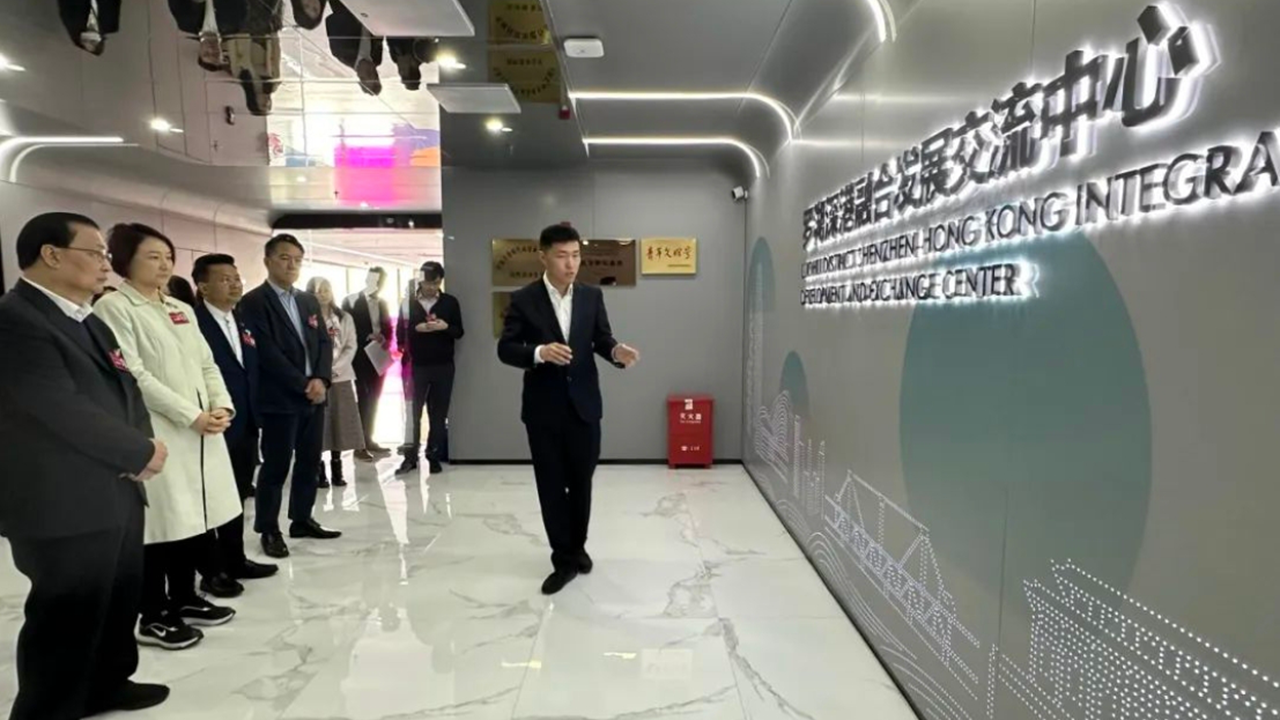SZ-HK integration development speeds up
Writer: Chen Xiaochun | Editor: Zhang Zeling | From: Shenzhen Daily | Updated: 2024-02-08
On the morning of Feb. 6, a delegation from the Hong Kong Democratic Alliance for the Betterment and Progress of Hong Kong visited Luohu to inspect Shenzhen-Hong Kong integration development projects in the district and exchange views on how to further deepen cooperation between Shenzhen and Hong Kong.
The Hong Kong delegation included Starry Lee Wai-king, a member of the Standing Committee of the National People's Congress (NPC) and a member of the Legislative Council of the Hong Kong Special Administrative Region of the People's Republic of China, and Tam Yiu-chung, vice president of the Chinese Association of Hong Kong & Macao Studies. Fan Defan, Party chief of Luohu District, Zuo Jinping, head of Luohu District, and other officials of the district joined the inspection.
The delegation first reached Liantang Checkpoint to learn about its operation. As the first large-scale cross-border infrastructure completed and put into use between Shenzhen and Hong Kong under the background of the construction of the Guangdong-Hong Kong-Macao Greater Bay Area, Liantang Checkpoint has fully performed its functions as a comprehensive land port for passenger and freight transportation.
The checkpoint's passenger and small vehicle inspection channels have been fully operational for one year. According to statistics, over the past year, the daily volume of inbound and outbound personnel inspections at Liantang Checkpoint has increased from over 6,900 to a peak of 80,000, orderly ensuring the safe and efficient clearance of 15.4 million inbound and outbound passengers, 260,000 inbound and outbound small vehicles, and 600,000 inbound and outbound trucks.
At the Liantang section of Shenzhen River, the delegation learned about the construction of the ecological belt.
The construction project of the Liantang section ecological belt, a demonstration zone for joint military-civilian support along the border, is a themed ecological belt focusing on the integration of military-civilian support and Shenzhen-Hong Kong cooperation.
It mainly involves upgrading and renovating the infrastructure within the border defense line, approximately 3.1 kilometers long, from Pengxing Overpass to Panshan Road in Liantang area. Specifically, it includes three major parts: road reconstruction, landscape upgrading, and enhancement of border defense system informatization. The construction of the project is in fullswing.

The delegation also visited Luohu District Shenzhen-Hong Kong Integration Development and Exchange Center.
Shenzhen-Hong Kong cooperation has always been a key factor in Luohu's development. Over the past year, Luohu has launched eight major demonstration projects for Shenzhen-Hong Kong integration, advancing the construction of the Luohu Shenzhen-Hong Kong Cooperation Industrial Park (B1 plot); introduced the country's first digital RMB hardware wallet self-service card issuing machine, achieving precise distribution of cross-border consumption subsidies for the first time and interconnection of payments between Shenzhen and Hong Kong; and initiated the pilot project for cross-border credit, facilitating nearly 2.6 billion yuan in domestic credit loans for Hong Kong enterprises.
The members of the inspection team hoped to accelerate the relocation of the fresh goods transportation function from Wenjindu Checkpoint to Liantang Checkpoint, transforming Wenjindu Checkpoint into a commuter port for business personnel. Additionally, they recommended adding bus routes or increasing frequency to and from Liantang Checkpoint and extending its opening hours.